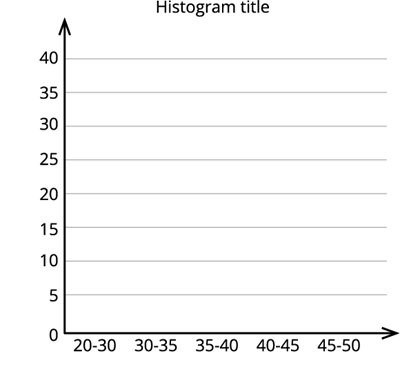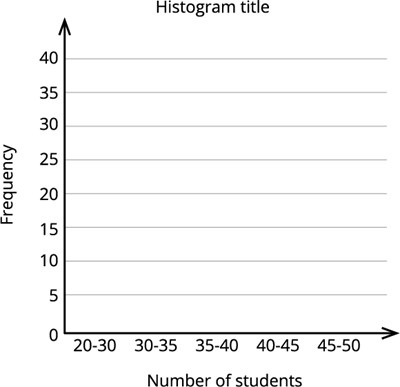PDF chapter test TRY NOW
We know that histograms are created on continuous data.
Let us consider the data table given below and try to construct a histogram step-by-step.
Problem:
A private organization conducted a survey across hundred schools in Chennai. The organization collected the average number of kindergarten children in each classroom.
The data table looks like this:
Number of students | \(25\) - \(30\) | \(30\) - \(35\) | \(35\) - \(40\) | \(40\) - \(45\) | \(45\) - \(50\) |
Frequency | \(15\) | \(35\) | \(18\) | \(25\) | \(7\) |
Now, let us try to construct a histogram.
Step \(1\): Convert the data received into continuous data.
Here, the data is already in continuous form. Hence, no conversion is required.
Step \(2\): Select appropriate names and units for \(X\)-axis and \(Y\)-axis.
Here, the axes will look like this:

Step \(3\): Now mark the class intervals along the \(X\)-axis, and the frequency along the \(Y\)-axis.

Step \(4\): Now, construct rectangles with class intervals as the base, and the frequency as the height.

